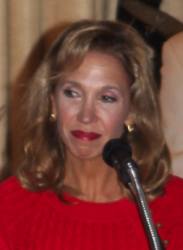Have You Seen this Bank Robber?
- Details
- Written by: Joanne Wallenstein
- Hits: 5443
 Scarsdale police are asking for your help to track down a bank robber who robbed the Scarsdale Webster Bank on the Popham Road Bridge on Saturday morning July 18 at 11 am. The suspect, seen here, entered the bank, demanded cash and left with an undisclosed amount.. He then fled east on Popham Road.
Scarsdale police are asking for your help to track down a bank robber who robbed the Scarsdale Webster Bank on the Popham Road Bridge on Saturday morning July 18 at 11 am. The suspect, seen here, entered the bank, demanded cash and left with an undisclosed amount.. He then fled east on Popham Road.
The suspect is described as a white male, approximately 5'11" to 6'1" and 200 pounds.
Police say that so far they have not found that the suspect is linked to any other bank robberies.Scarsdale Police are asking the public to help identify the suspect. If you have information call the police at 914-722-1200. Anonymous tips can be submitted by texting VSPDTIP and your tip to 847411 or through the web at www.scarsdale.com/police.
Scarsdale Police are working with the FBI, and two Special Agents from the FBI's Bank Robbery Task Force responded to the scene of the Webster Bank robbery. They are also working with the Westchester County District Attorney's Office Financial Crimes Division and the Westchester County Intelligence Center to assist with imagery evaluation. The investigation is active and DNA samples have been submitted to the Westchester County Forensic Lab. Surveillance video from the downtown area are being analyzed, and more video expected to come in on Monday.


Refunds from the Scarsdale Community Center
- Details
- Written by: Joanne Wallenstein
- Hits: 7835
 We received this letter from Scarsdale resident John Auerbacher who contributed $625 in support of a Scarsdale Community Center with an indoor pool many years ago. Plans to build the center never came to fruition and below he describes his attempts to have his money returned. We have received several similar queries over the years:
We received this letter from Scarsdale resident John Auerbacher who contributed $625 in support of a Scarsdale Community Center with an indoor pool many years ago. Plans to build the center never came to fruition and below he describes his attempts to have his money returned. We have received several similar queries over the years:
(From John Auerbacher) Many passionate people worked creatively and diligently, but unsuccessfully, to build the Scarsdale Community Center, a proposed indoor pool, fitness center, meeting place and gathering spot for our town. I was an early supporter and enthusiast for this project after we moved here in 1998. For many reasons – insufficient interest, lack of a suitable site, cost and the recession – the SCC was never built.
Thirteen years ago, I was one of hundreds of "Founding Members" who pledged and paid $625 (the estimated yearly membership fee) to demonstrate to the Scarsdale Board of Trustees a certain level of interest. The money was to be placed in an SCC "reserve" account with the Bank of New York.
I have tried sporadically in the last 12 years to obtain a refund "without interest if the Community Center is not built or if you move away" (as the receipt letter stated). Happily, I received a check yesterday.
Yet I am distinctly unnerved because of the difficulty I had in retrieving this money and the absence of communication in the last five years from the SCC. Are there hundreds of residents in a similar situation or am I the only one who didn't receive the memo?
How to Protect Your Kids from Dangerous Apps
- Details
- Written by: Stacie M. Waldman
- Hits: 11093
 "Parents have no idea what apps are on our phones."
"Parents have no idea what apps are on our phones."
"My parents recognize app names but they have no idea what the icons look like."
"Parents have no idea what apps do and the risks they pose."
These quotes came directly from incoming high school seniors and recent high school grads. According to these teens, their parents have no idea about what apps are on their children's phones. Why should parents care about these apps? Can they be dangerous or used maliciously? What can be done to protect kids from the downsides of certain apps?
Why you should know what's on their phones
Parents are ultimately responsible for their children until they are legal adults. Some apps can be used to bully, form cliques, speak anonymously, rate others and even solicit sex. Parents of tweens/teens should have the ultimate say as to what apps are on their child's phone and they should be familiar with the apps' uses. Apps have gotten teenagers into trouble that will follow them into adulthood and may impact their ability to get into college or find employment.
Even if you do know what apps your kids use, you can't control everything. One high school student told me about an incident that landed one of her classmates on a sex offender list. The classmate downloaded nude photos off the Internet, used Photoshop to change the faces on the photos and then posted them online claiming they were naked pictures of students in the school. Before he was arrested, he even sold hardcopies of the pictures. This was done using only Facebook.
How could apps put your child at risk?
A 16-year-old girl from Pelham High School told me about "Twitter fights" where people are mocked or criticized without using names. Kids post sub-tweets or subliminal tweets that refer to a particular user without directly mentioning their names, as a form of mockery or criticism." The posters think they can avoid any form of blame or punishment since no particular person is mentioned (it's just assumed). The Pelham student said that it has caused many fights between students in her school and allows nasty rumors to spread rapidly.
Teens often use Snapchat to text or post videos because the messages "disappear"  automatically after just a few seconds. Teens believe they can send or say anything as the evidence disappears after it is sent. However these photos, videos, and texts don't truly disappear. Others can take screen shots of a picture or text before it is deleted, which has landed some teens in trouble. Snapchat has a security feature that will notify someone if a screen shot is taken, but this feature can be overridden by yet another app. Snapchat has been used by college students, for example, to shame people. "I remember a Snapchat picture going all around college of a girl leaving a guy's room early in the morning after a one night stand- it was awful for her for the next month at school," said one college sophomore. One teen told me that group chats are often very exclusive and are the modern way to form cliques.
automatically after just a few seconds. Teens believe they can send or say anything as the evidence disappears after it is sent. However these photos, videos, and texts don't truly disappear. Others can take screen shots of a picture or text before it is deleted, which has landed some teens in trouble. Snapchat has a security feature that will notify someone if a screen shot is taken, but this feature can be overridden by yet another app. Snapchat has been used by college students, for example, to shame people. "I remember a Snapchat picture going all around college of a girl leaving a guy's room early in the morning after a one night stand- it was awful for her for the next month at school," said one college sophomore. One teen told me that group chats are often very exclusive and are the modern way to form cliques.
Tinder is another popular app that is used to arrange hook-ups. A teen can type in the age and gender of a desired partner and their own geographic radius and instantly find others who fit the bill. Swiping your screen one way allows you to like a photo and the other way allows you to dislike a photo. Hook ups are arranged anonymously. Experts feel that the location service puts kids at risk for stalking or sexual harassment and facilitates face-to-face meetings with strangers and potentially dangerous predators.
Kik (pronounced "keek" by high schoolers, "kick" by parents) is an app that sexual predators use to lure children and teens into submitting naked photos of themselves and to inquire about their sexual experiences. There are 90 million users and there are no parental controls. Education.com ranks it as one of the worst apps for kids. It has been used to transmit child pornography and is often mentioned by pedophiles as their ideal app. A recent Mamaroneck High School graduate told me that nobody at her school uses Kik because the school held an assembly to discuss the dangers of the app. Interestingly, the Kik website has a law enforcement tab which notes that they are sponsoring the 27th annual Crimes Against Children conference.
Many parents have Instagram accounts and use them to post photos of their children. However, it's becoming more common for teens to use Instagram to rate other teens via online beauty and popularity contests.
Yik Yak permits users to chat anonymously and with people nearby. Users can post messages, rumors and comments and vote posts up or down. Though it's rated for ages 17+, anyone can download the app. Two high school students I spoke to said that Yik Yak is used for bullying. School administrators have warned against using it as police can trace messages back to a single phone and user.
What can be done to protect kids from the downsides of apps?
This one's easy. Know your child's phone! Know the app name, recognize the icon, and do your research online to determine whether the app is something you want your child to use. If you decide that an app is potentially dangerous, give your child a good reason why it needs to be deleted.
If an app fits into a "gray" area of safety, talk to your son or daughter about how to and how not to use it. For example, if your teen uses Snap Chat tell them that texts can be saved and recovered by law enforcement. Encourage them not to participate in group texts that are mean or inappropriate.
Educate yourself and your kids about apps and their potential pitfalls. Though the apps listed above aren't inherently dangerous, when misused they can cause a lifetime of trouble. Read advice from a psychologist on parenting tech savvy kids here.
Assemblywoman Amy Paulin Champions Womens' Rights
- Details
- Written by: Joanne Wallenstein
- Hits: 3396
 (Here is a letter from State Assemblywoman and Scarsdale resident Amy Paulin) Based on the turmoil of high profile indictments and resulting swift changes in leadership, many observers of what happens in Albany might have concluded early on that this would be a lost session. Yet despite assumptions that this would just be another year of dysfunction and corruption, I am pleased and proud to report that this was one of the most productive legislative sessions for championing the rights of women.
(Here is a letter from State Assemblywoman and Scarsdale resident Amy Paulin) Based on the turmoil of high profile indictments and resulting swift changes in leadership, many observers of what happens in Albany might have concluded early on that this would be a lost session. Yet despite assumptions that this would just be another year of dysfunction and corruption, I am pleased and proud to report that this was one of the most productive legislative sessions for championing the rights of women.
Without fanfare, the Assembly has passed nine important bills, previously subsumed in the Women's Equality Agenda. These bills, to highlight a few, will prohibit pay disparity based on gender, ban sexual harassment in the workplace, and require employers to provide reasonable accommodations to pregnant employees in the workplace. I am especially gratified that the Trafficking Victims Protection and Justice Act (TVPJA), a bill I authored, was among the nine passed. The TVPJA will strengthen our human trafficking laws by, among other things, holding buyers and traffickers more accountable, providing law enforcement with additional investigative tools to identify traffickers, increasing awareness among law enforcement to enable them to recognize trafficking victims and refer them to services, and providing victims the ability to recover damages from their traffickers.
With the Senate having passed these bills, once they have been signed into law, we will be better able to ensure that women can pursue their goals and lead successful lives, free from discrimination, harassment, exploitation and abuse. Although we still have work to do to achieve women's equality in all respects, we have taken enormous strides forward this year toward that end.
Amy Paulin is New York State Assemblywoman representing the 88th District. She is also a Scarsdale resident.
Ticks, Ticks, Ticks
- Details
- Written by: Stacie M. Waldman
- Hits: 11955
 It's officially "tick season." Soon after I started asking people in the Scarsdale area if they've ever found a tick attached to them, I realized that virtually everyone has experienced this gnarly phenomenon. Ticks are very common in the Hudson Valley and many species of ticks that live (and thrive) here are known for carrying tick-borne diseases that can be transmitted to humans. In fact, the CDC cites Lyme disease as "...the most rapidly emerging infections disease and the leading cause of insect-borne illnesses."
It's officially "tick season." Soon after I started asking people in the Scarsdale area if they've ever found a tick attached to them, I realized that virtually everyone has experienced this gnarly phenomenon. Ticks are very common in the Hudson Valley and many species of ticks that live (and thrive) here are known for carrying tick-borne diseases that can be transmitted to humans. In fact, the CDC cites Lyme disease as "...the most rapidly emerging infections disease and the leading cause of insect-borne illnesses."
Joanne Wallenstein, the founder of www.scarsdale10583.com has had two attached ticks and she is pretty sure she got them both out in the Hamptons. "My aunt has a small, furry dog that probably sent them my way," she said. "In both instances, a few days after I cam home, I found a black dot that I couldn't peel off." My family and I just came back from a camping trip and we found several ticks on us of varying sizes. They can be as small as a speck of pepper and as large as a pencil eraser when they are engorged with your blood.
Here are the most common questions that came up about these nasty little arachnids along with their researched answers.
Why are ticks such a threat in our area?
Several species of ticks commonly found in our area can cause a host of diseases including Lyme disease, Powassan, anaplasmosis, babesiosis, Colorado tick fever, Rocky Mountain Spotted Fever, tularemia, relapsing fever, and/or erlichiosis. The severity of these diseases ranges from mild to life threatening and even fatal. Some tick-borne diseases have the potential to lead to long-term neurological, cardiac, muscular, and eye issues that may not be treatable or curable. The Scarsdale/Southern Westchester area is wooded, has low lying grasslands, and is filled with front yards and back yards, all of which represent ticks' favorite spots to hang out and breed.
What should you do if you find a tick on yourself?
I spoke with Dr. Judy Stone, an experienced infectious disease doctor who has removed many ticks from herself and her husband. "There's a video on www.tickencounters.org that shows you how to properly remove a tick yourself with a pair of tweezers," she said. "It's no longer recommended that you burn it off or suffocate it with petroleum jelly," she added. Joanne Wallenstein preferred going to a dermatologist to have her ticks removed, but that requires getting an appointment with one, something that can take a while in this area unless you have a previous relationship. (They're busy with botox these days!) Joanne's doctor sent the ticks off to be tested for Lyme immediately. You can also send a tick off for testing on your own, according to Dr. Stone. The Tick Encounter Resource Center (TERC) will test your tick for various diseases for about $50 per tick. You can also send them a photo of the tick you found on you to start and they will tell you what kind of tick it is and how long it has been attached. This can help you gauge if you should have the tick tested or not. "If the tick was attached for less than 24 hours and you're asymptomatic, you do not need to go to the doctor," said Dr. Stone. "No treatment is necessary. However, 200 mg of doxycycline is effective for prophylaxis for Lyme (preventing you from getting the full blown disease) if taken within 2-3 days of the bite. It is not enough if you are symptomatic." Joanne took doxycycline both times for two weeks even though one of her ticks came back negative for carrying Lyme disease and she has remained asymptomatic. Remember, a Lyme positive tick newly attached (less than 24 hours) cannot transmit the disease so no treatment is necessary. Always kill the tick in alcohol and save it. Be sure to wash the area out well with soap and water.
What are signs and symptoms of a tick-borne disease in a person and how is it diagnosed?
These are variable since there are so many different diseases ticks in this area can transmit. The most common one, Lyme, is often identified by a bulls-eye rash but not always. If a person has been outside in woodsy or grassy areas and has any of the following symptoms, it's a good idea to see a doctor: rash lasting up to a few weeks (it can look like a bulls-eye or even just like hives, eczema, flea bites, or poison ivy and may or may not itch), flu like symptoms, a fever, weakness, headaches, or neurological symptoms like weakening of the facial muscles. Months or years later, a person can experience arthritis, numbness, concentration and memory issues, and difficulties with speech. Diagnosis of a tick-borne disease like Lyme is very difficult without a history of a tick bite. Serological tests can be run but are unreliable.
What can I do to protect myself and my kids from ticks?
The CDC recommends walking in the center of trails, bathing as soon as you come indoors and checking all people and pets for ticks, dressing in light clothing for hikes, wearing close-toed shoes and socks, wearing long-sleeved shirts and pants tucked into socks if hiking. It is especially important to check behind their knees, on their scalp and neck, armpits and groin area, and anywhere that clothing puts pressure on their skin. Insect repellant that contains DEET (less than 30% is recommended for use on kids) is effective at repelling ticks but not at killing them and it is only effective on bare skin. Permethrin, on the other hand, kills ticks and can be used on clothes. Dr. Stone believes Permethrin treated clothes and shoes are the safest and most effective way to prevent ticks along with tick checks several times a day. "Treating clothes with Permethrin or buying pre-treated clothes is a good idea if you're going to be in tick-infested areas," she suggested. If you're worried about chemical exposure, TERC has a permethrin exposure calculator that will quell your fears immediately in terms of how little absorption occurs with Permethrin-treated clothes. (For example, a 125 lb. adult wearing a treated shirt, pair of pants, and socks would have to wear 1,817 of those items all at once to reach the EPA's daily dermal No Observable Effect level!) You can spray your yard but few sprays and techniques have been found to be effective at tick reduction.
What resources can I access for more information?
Tick Encounter Resource Center (TERC)
Westchester County Tick-borne Disease Info Line: 914-813-LYME
CDC










